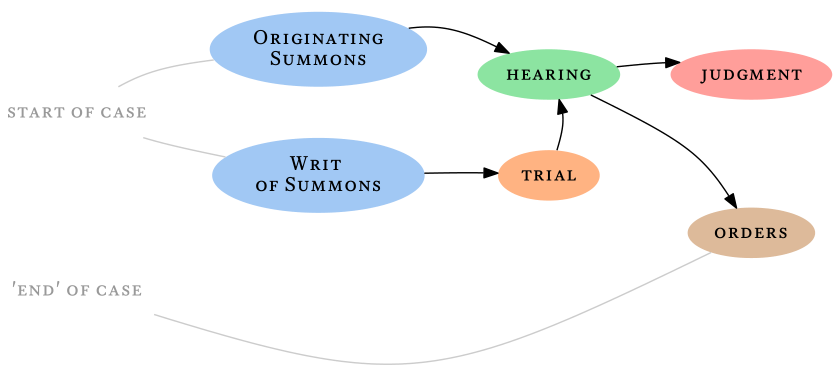The Malaysian Civil Courts - Judgments & Orders, Part 1
On what judgments/orders are, and what they do.
An ‘order’ is a legally-binding ‘ruling’, as made by a court.
Generally, to obtain orders, you must have a case, file the correct court papers, submit evidence at the trial or hearing, and argue/prove your merits in accordance with law.
If satisfied, the judge may then grant ‘judgment’ or ‘orders’ in your favour. (Below: a simplified chart showing the flow of legal proceedings, from commencement to a potential ‘end’.)

Why orders matter
Orders matter, because they carry the force of law. Disobey, and there could be consequences. You also run the risk of being held in contempt of court (which could lead to fines or jail).
Their force is why, legally, orders are generally known as ‘reliefs’. The term makes sense if you consider it in context:
-
Patients see doctors for physical ‘relief’, and ask for medicine and treatment to solve their medical issues.
-
Clients see lawyers and go to court for legal ‘relief’, and ask for orders to solve their real-life problems and legal issues.
The analogy is actually astute. Just as there are all sorts of medicine, there are orders of various kinds too. Among others, orders can:
-
make someone do something - e.g. ‘monetary orders’, which direct monies to be paid, or ‘mandatory injunction orders’, which direct an act of some kind to be performed;
-
stop someone from doing something - e.g. ‘prohibitory injunction orders’ and ‘quia timet’ orders, which try to prevent harmful acts from being carried out;
-
recognize or de-recognize rights - e.g. ‘declarations’ and ‘declaratory decrees’;
-
change or affect legal status - e.g. a person could be made bankrupt through ‘receiving/adjudication orders’, and companies could be shut down via ‘winding-up orders’;
-
vest or transfer power to others - e.g. a ‘grant of probate’ or ‘letters of administration’, which are documents that give power to heirs or representatives to handle the affairs of a person who has passed away;
-
check and overrule egregious use or abuses of power - e.g. orders obtained through ‘judicial review’ - see Shanmuga Kanesalingam’s excellent article on how to sue the government; and
-
validate acts that are otherwise unlawful or illegal - e.g. orders can legally force the disclosure of information, attach/garnish bank accounts, sell and foreclose land, seize property, and so on.
Judgments vs orders
This brings us to another point: ‘judgments’ vs ‘orders’. People often use the terms interchangeably; even lawyers do, sometimes.
Fundamentally however, they are not the same.
I don’t intend to get into the differences fully, as scholarly articles and jurisprudence have addressed the issue enough. But the differences could be generalized as follows:
-
Finality - Judgments imply finality. They are usually issued after the main case is over. In contrast, orders aren’t always final - this is why you have phrases such as ‘ad interim orders’ and ‘interlocutory orders’ (but not phrases like ‘ad interim judgments’).
-
Container - Judgments may contain orders, but not always. It is quite possible for a judgment to not contain any orders at all (such as where your suit is dismissed, and no orders were made).
-
Source - Judgments arise from the central dispute among parties, which is why they usually come at the end. Orders however aren’t as rigid; many can be made before, during or even after a dispute is resolved; some can be made by the court ‘on its own motion’ (i.e. when the Court wants to, without needing a party’s formal request); some can be made whenever necessary, so as to ensure justice.
-
Position - Judgments tend to favour or disfavour a side: either the suing party, or the defending party. Orders need not. An order could even be made against the party applying for it, or establish a certain status quo that prefers neither side.
These differences are not of importance to non-lawyers. But it’s worth knowing about them, as the law differentiates between them, and perhaps it could be a point of discussion with your lawyer if the situation ever arises.
In my next article, I will proceed to deal with how orders and judgments are actually made.
